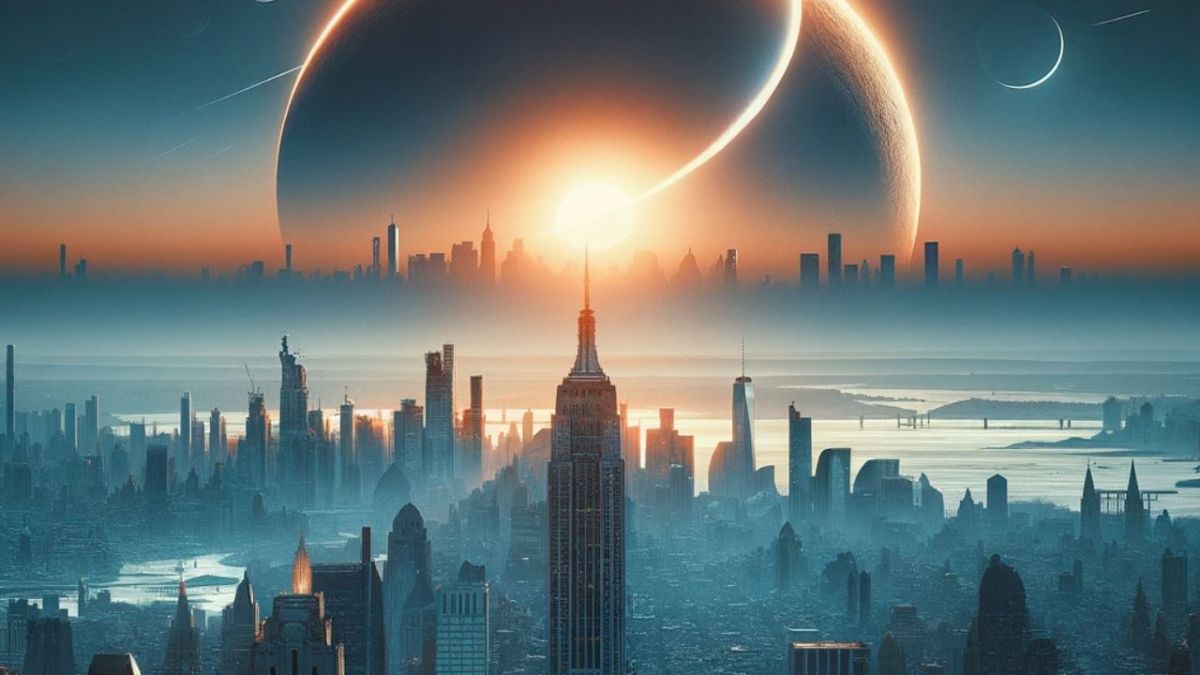The winter solstice, an event that has fascinated humanity throughout history, represents much more than just a change in the calendar..
It is an astronomical phenomenon that marks a key point in the Earth’s orbit around the Sun, as Space.com explains in an article.
Now, the term “solstice” comes from the Latin “solstice”.“, which means “still sun.” This name refers to the apparent pause in the movement of the sun in the sky when it reaches its maximum angular distance from the celestial equator.
This phenomenon occurs twice a year, in winter and summer, with the winter solstice, taking place between December 21 and 22 in the northern hemisphere, and between June 20 and 21 in the southern hemisphere, varying slightly each year due to the nature of the Gregorian calendar and leap years.
This year 2023, in New York, the winter solstice (Northern Hemisphere) will begin at 10:27 pm, next Thursday, December 21.
What happens on the winter solstice?
The winter solstice is characterized by being the shortest day and the longest night of the year in the hemisphere where it occurs. In astronomical terms, it marks the moment when Earth’s North Pole is furthest from the Sun, reaching an inclination of approximately 23.5 degrees.
This phenomenon occurs twice a year, in winter and summer, with the winter solstice, taking place between December 21 and 22 in the northern hemisphere. (Image created by Impremedia with Dall-e AI)
This peculiar orientation of the Earth with respect to the Sun gives rise to significant variations in the length of daylight and, therefore, the official onset of winter.
In addition to its astronomical importance, the winter solstice has had a profound cultural and spiritual impact throughout the centuries. Various cultures around the world have interpreted this event as a moment of renewal and rebirth. Festivals, fairs, rituals and celebrations have revolved around this phenomenon, reflecting the richness and diversity of human traditions.
History and Ancient Traditions of the Winter Solstice
The winter solstice, an astronomical and cultural phenomenon of great importance, It has been celebrated in various ways throughout history in different cultures.
In Roman culture, the Unconquered Sun or Invincible sun marked the winter solstice, according to the Mexican media Cultura Colectiva.
This celebration symbolized the rebirth of the sun, considered as the triumph of light over darkness, coinciding with the gradual lengthening of the days. This pagan holiday was later adopted by Christianity, becoming the celebration of Christmas.
Another interesting tradition is that of the Nordic peoples, particularly in the celebration of Yule, also known as Jul. Yule was a holiday that lasted for several days, beginning on the winter solstice, and included feasts, sacrifices, and rituals. A central aspect of these celebrations was the “Wild Hunt”, a spectral procession led by the figure of Odin.
Image depicting a traditional Yule celebration in a Nordic village, capturing the festive atmosphere with villagers gathered around a bonfire, traditional decorations and a clear, starry night sky. (Image created by Impremedia with Dall-e AI)
This hunt crossed the skies during the Yule nights, being a spectacle both feared and revered. Fire, in the form of bonfires and candles, played a crucial role in Yule, symbolizing the rebirth of the sun.
In Mesoamerican cultures, such as that of the Mayans, the winter solstice also had great importance. Many of its temples were oriented towards sunrise on key dates, such as the Kukulkan pyramid in Chichén Itzá, which functioned as an authentic astronomical calendar.
These festivities and celebrations, although varied in their practices and symbolism, shared a common theme: the importance of the sun in life and the change of seasons, marking a time of renewal and hope.
Modern Winter Solstice Celebrations
Today, the winter solstice remains a significant date in various parts of the world, celebrated with a mix of ancient traditions and new contemporary rituals.
In Western cultures, the winter solstice is often celebrated as part of Christmas festivities., según National Geographic.
In many regions, Christmas markets are organized, tree lighting events and religious ceremonies. These celebrations reflect the fusion of pagan solstice traditions with Christian customs.
Image showing a depiction of the summer solstice in New York City, featuring a vibrant cityscape with people enjoying the longest day of the year in various ways. (Image created by Impremedia with Dall-e AI)
In the neopagan and Wiccan community, the winter solstice remains an important holiday. Rituals are performed that include lighting candles and bonfires, decorating with natural symbols such as pine branches and mistletoe, and performing acts that symbolize regeneration and hope. These modern celebrations often focus on the spirituality of nature and respect for seasonal cycles.
In addition, cultural and scientific events are held in many places to observe and celebrate the astronomical phenomenon. Observatories and museums can host educational and observing events, providing an opportunity to learn more about the science behind the solstices.
Enjoy the Winter Solstice in New York
To observe and experience the winter solstice in new yorkthere are several recommended activities and places that you can enjoy:
- Visit Central Park: This emblematic park is transformed into a winter wonderland, being an ideal place to enjoy the landscape and activities such as ice skating or simply walking.
- Explore Museums: Visiting museums such as the Metropolitan Museum of Art (The Met), the Museum of Modern Art (MoMA), or the American Museum of Natural History is an excellent option to enjoy art and culture in a warm environment.
- Enjoy a Broadway Show: Winter is a good time to enjoy the famous Broadway shows, with a wide variety of works for all tastes.
- New York Botanical Garden: During the winter, you can visit the Botanical Garden to enjoy its Christmas light show and other winter displays.
- Ice skating: Places like the skating rink at Rockefeller Center offer a classic New York winter experience.
- See the Statue of Liberty: Despite the cold, visiting this iconic monument is still an essential activity, with the option of taking a ferry to the island.
- Visitar el Radio City Christmas Spectacular: This Christmas show is a New York tradition and features the famous Rockettes dance group.
- Explore the Bryant Park Christmas Market: It offers a variety of food options, gifts and activities for the whole family, including a free ice skating rink if you bring your own skates.
- Ski or Snowboard: If you like adventure, you can enjoy the lighted slopes at Holiday Mountain Ski & Fun Park or visit Hunter Mountain Ski Resort.
- Remember to dress appropriately for the cold, snowy weather of New York in winter. Bringing a warm coat, scarf, hat, gloves, and appropriate footwear is essential to fully enjoy these activities.
Keep reading:
· This is what New York would look like if it were “a Christmas country”, according to Artificial Intelligence
· The 7 best plans to celebrate Christmas in New York, according to Artificial Intelligence
· The 7 best businesses to start in New York during the winter, according to Artificial Intelligence
2023-12-20 21:55:03
#Winter #Solstice #Cosmic #Celebration #enjoy #Diario


